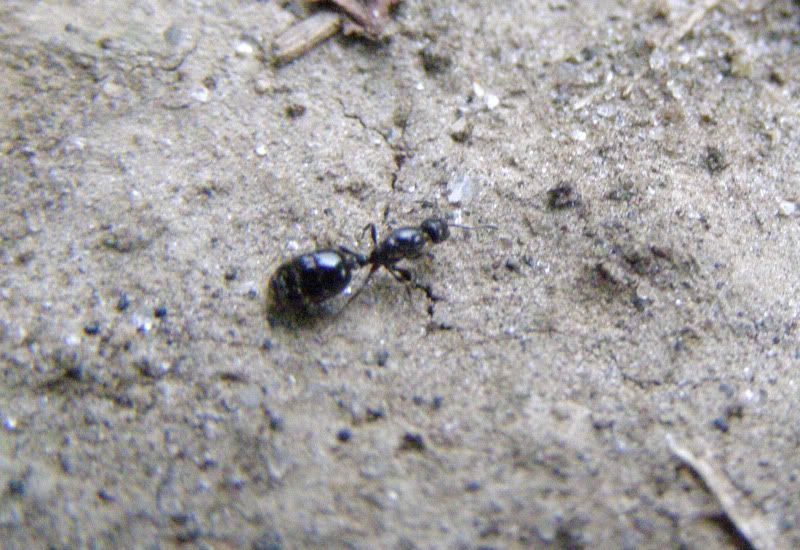
While taking pictures of a colony of Aphaenogaster flight I stumbled upon a queen who had mated earlier in the day. Pictured above is a Monomorium minimum queen which I didn't even know had nuptial flights, but there she is. Monomorium are very tiny ants (2mm long workers!) that normally nest in sand. Despite making a small mound or two they're almost completely unnoticed by the average person. When digging into the nest you normally find dozens of queens with hundreds of workers that are just inches into the earth's surface. They are easily one of the easiest ants to catch. In captivity however, they don't fair as well. Colonies slowly dwindle down to nothing. I actually caught this queen and have her in a test tube setup. We'll see how far this gets.
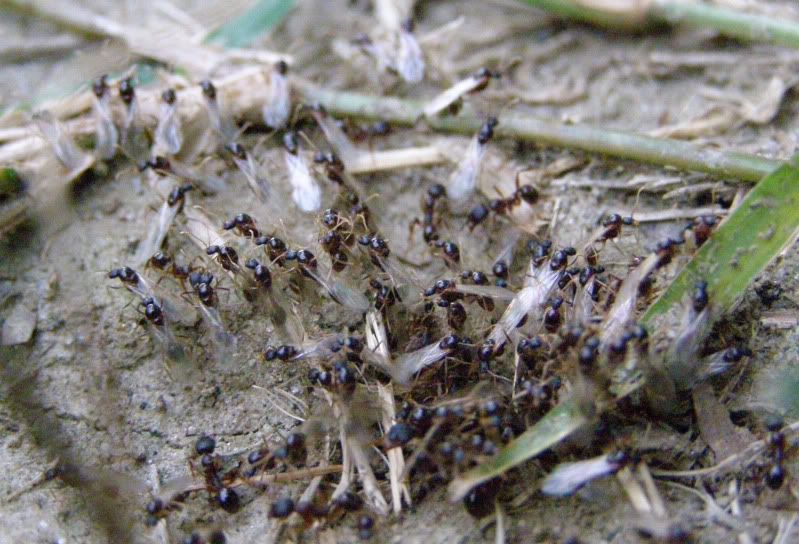
A bit after 6:00pm I found in the not so lush area of the yard a colony of Aphaenogaster with alates all gathered at the entrance. Pictured above are dozens of winged male ants that are monitoring the sky for favorable conditions. If such conditions hold out they will soon begin taking off one by one and filling the sky with pheromones that encourage not only queens to get out of the nest, but for every other colony of this species to start their nuptial flight. But because ants can't hear they didn't realize the sound of thunder rumbling in the distance.

The males are only there to mate with queens during the nuptial flight. During the down time when they're in the nest they're a drag on the colony resources. Something you may notice about the males is how dumbed down they are compared to the workers. As far as development goes they are stripped of everything but he bare essentials for what nature intended. Their mandates are so underdeveloped that the workers are their only source of food.
What males have going for them though is excellent vision. Their eyes are gigantic compared to that of the workers . If I were able to do a close up I would have taken a shot of the three extra eyes/light sensors that make a triangle on the male four head area. This gives the ant heat vision which makes finding a queen all the more easier to do in the air.
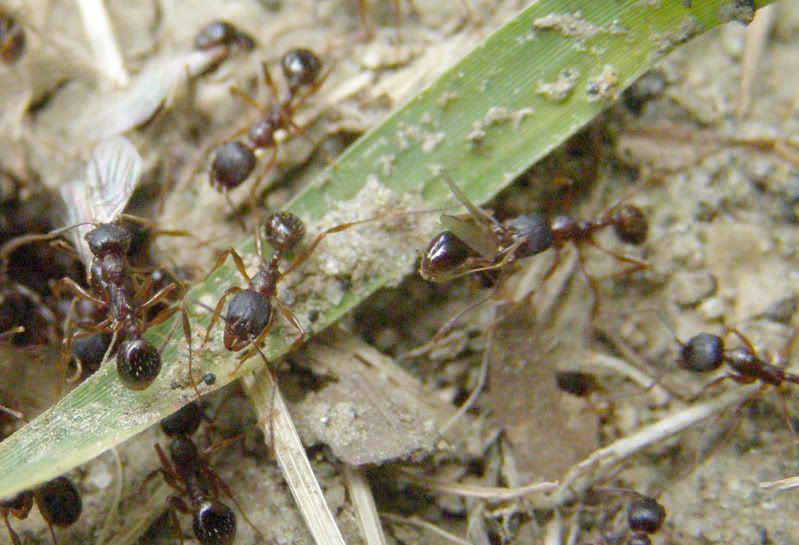
Here you can see a worker carrying a male out of the nest. When in complete darkness alates don't do very much. But once they're put out in the light suddenly they get an amazing urge to spread their wings and fly around.

I actually have no idea what species of Aphaenogaster this is, but when it comes to ants a good profile shot is essential. This is the best I could do. One can very clearly make out the head, length of antenna, possibly count the antenna segments; you can see the thorax area and make out how the various parts fold over one another as well where humps, bumps, and spines are if present; you can clearly see the ant has two waist segments before the abdomen. And you can even make out where the hairs are on the body. The color and length of the legs compared with that of the body. Color is usually not very useful along but sometimes certain uniforms are more apparent in some species. And lastly shininess, dullness, and over all texture of the body parts, (head, thorax, and abdomen).
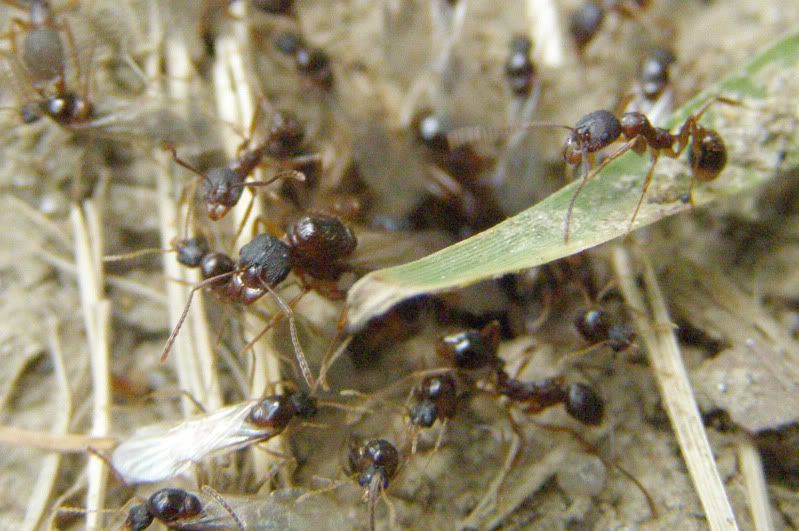
A queen finally emerges. She's actually more developed than the workers. For this particular group of ants queens have fully functioning reproductive organs. Their abdomen is a lot bigger in size and full of food stores for her to start a colony of her own. After mating I normally find these queens in damp leaf litter or dead wood. I actually have a colony probably of the same species right now. Though in captivity I have the issue of alates inbreeding in the nest.
However, there was no nuptial flight on that day. It started raining pretty hard and thundering close by. I admired their persistence though. Even with rain falling on them they maintained their cluster at the entrance. My tolerance of the rain wared out before they went inside.
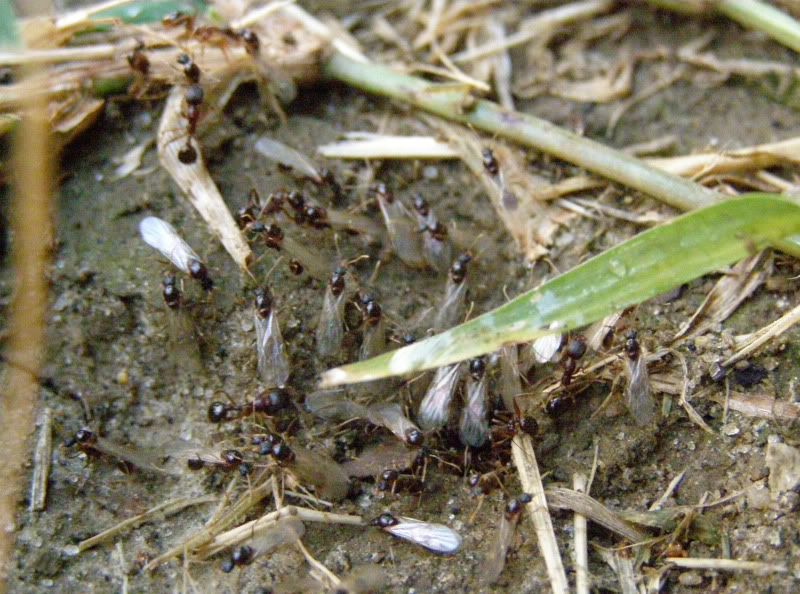
The storm wasn't that bad though and it stopped raining with in an hour. The thunder also stopped. Pictured above is the ants attempting to fly again. They ran out of day light though. Better luck tomorrow I guess.